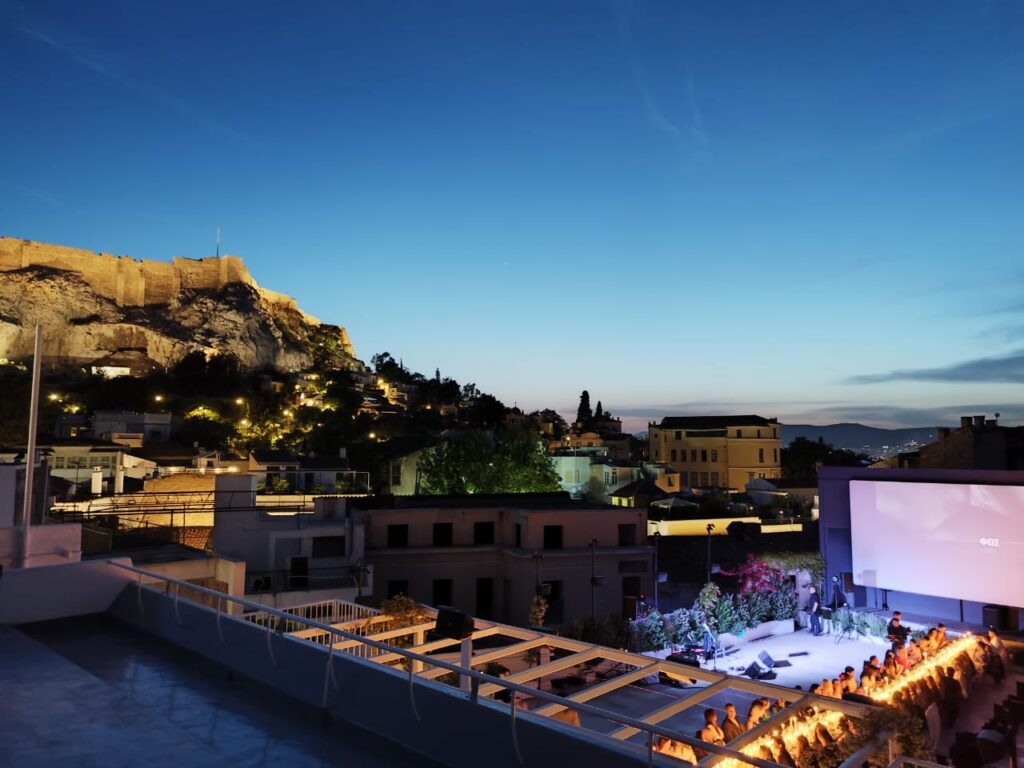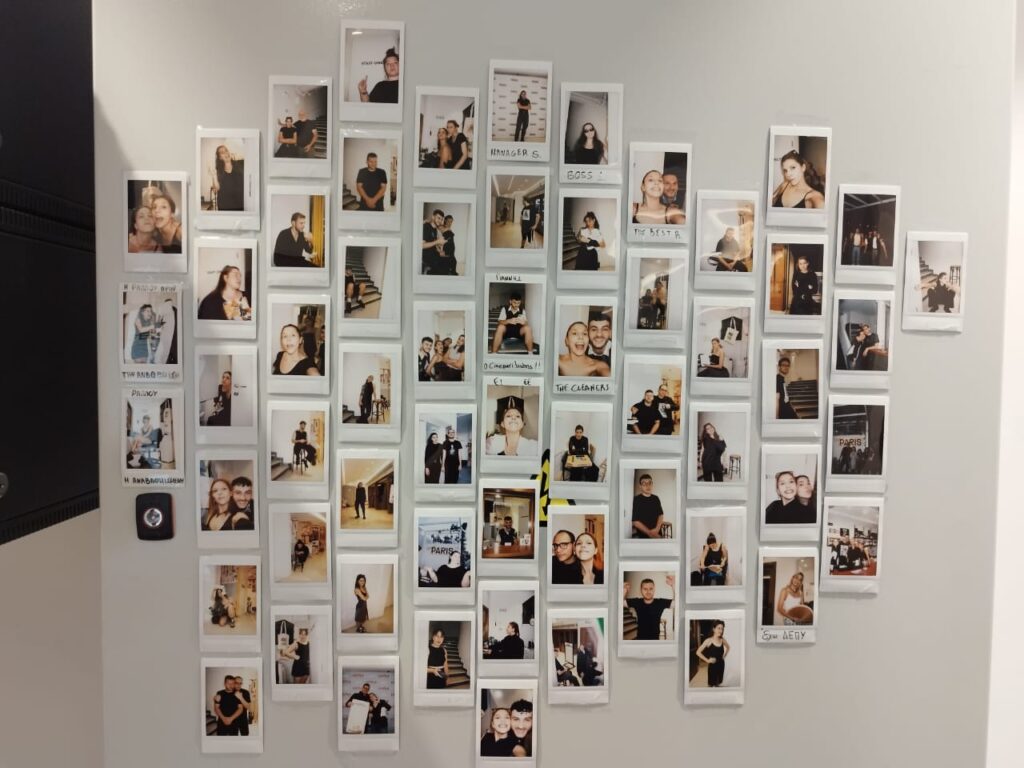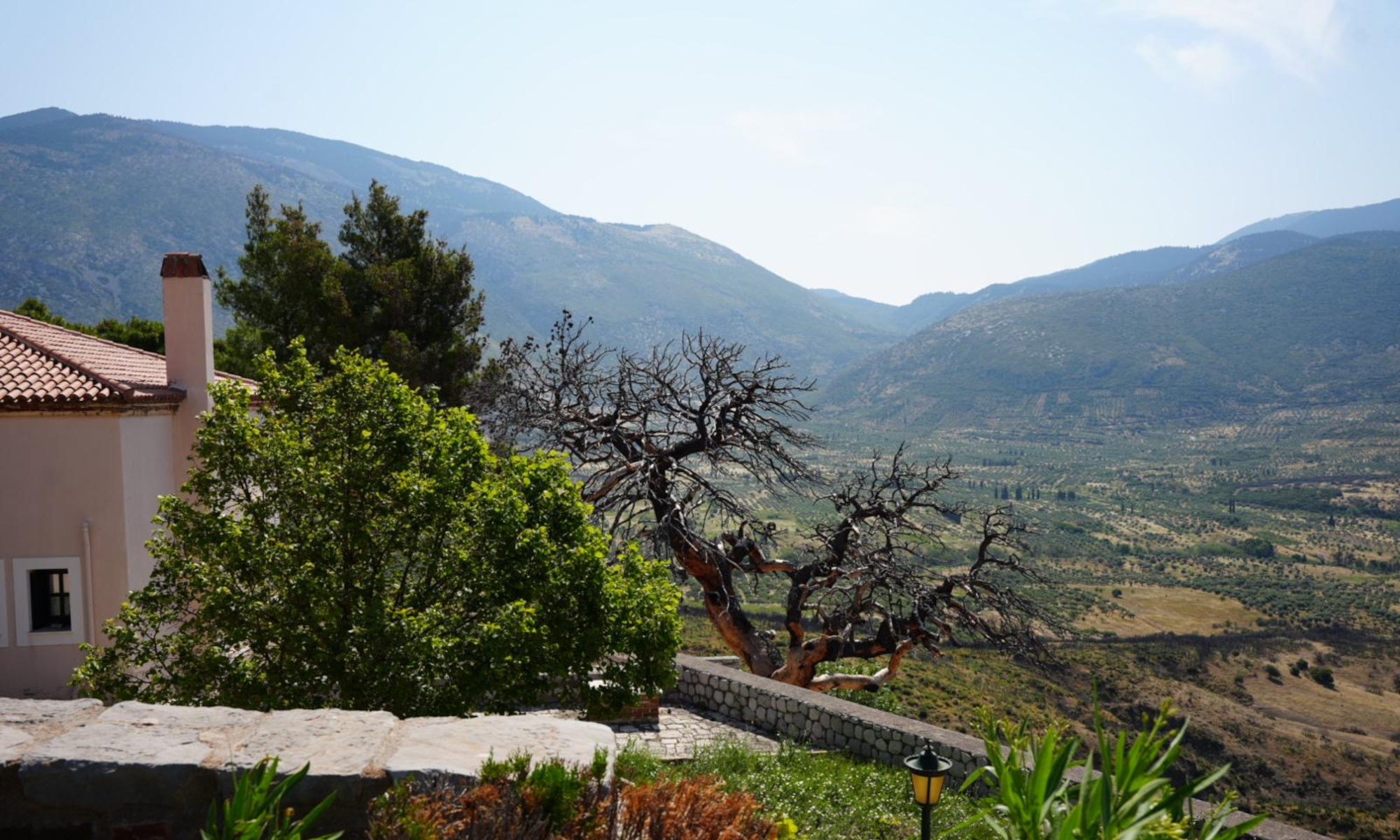By Megan Cameron

Nestled in the heart of the famous Plaka neighborhood sits Cine Paris, one of the oldest open-air cinemas in Athens. Each night, a glowing neon sign advertises the cinema’s name to the bustling Kidathineon Street. Three sets of wooden double doors sit below the sign, open wide to welcome tourists and locals alike with the promise of breathtaking views of the Acropolis, refuge from summer crowds, and, according to one ranking of the city’s best cinemas, distinct “nostalgic charm.”
When I first entered the cinema, its modern feel shocked me. I had come hoping to experience some nostalgia for myself, but the theater’s entryway was refreshingly pristine, constructed of spotless white floors, ceilings, and walls. I was greeted by a blast of artificially cooled air–a rarity in Greece, I have learned–and bright white lights, which both pleasantly surprised me and slightly disoriented me. Momentarily unsettled by the room’s faint sterile quality, and confused about where to go next, I was rescued by a friendly employee named Dimitris Panagiotis Zabouras.
Zabouras, a 22-year old university student, works at Cine Paris as a self-described generalist. During his shifts, which typically begin at 7:00pm and end around midnight, he is often responsible for completing a plethora of tasks. These include manning the cash register, directing customers to their seats, keeping the screening space tidy, and more.
He told me he began working at the historic business earlier this year at the start of its summer season. So far, he has most enjoyed connecting with his co-workers “in such an excellent environment” that reflects Greece’s “deep cultural love for film” and “social gathering.” To illustrate how these meaningful relationships have manifested, Zabouras shared an endearing photo with me, which features a wall at the cinema that he and his co-workers have adorned with Polaroids.

Based on my brief time spent in Greece so far, I similarly feel that few other cultural or historical institutions I have come across reflect the country’s complex quest for identity over the past 50 years as perfectly as open-air cinemas. Unlike ancient temples or monuments, which stand as frozen representations of specific periods in Greece’s history, many iconic cinemas, once powerful symbols of community and fixtures of daily life in Athens, have been forced to adapt to stay afloat.
The initiation of these phases of adaptation have typically aligned with particularly tumultuous points in the broader trajectory of Greece as a whole. Starting in the 1990’s and early 2000’s, major technological advancements, political turmoil, economic crises, and demographic changes have made it extremely difficult for these cinemas to maintain their traditional, small, family-owned business model.
To avoid shutting down like other cinemas in the area, Cine Paris recently began operating under the guidance of Cinobo, a popular Greek streaming platform and film distributor. The building itself was also acquired by the Stelios Philanthropic Foundation, which provided extensive renovation assistance during the cinema’s four-year closure period that ended in May of last year.
With these cinemas continuing to evolve, slowly disinfecting themselves from the stains of time and moving further from their historic roots, what will Athens be left with? Where will locals go to relive some of their favorite childhood memories? And what about the tourists, who may be losing out on one of their coveted chances to experience a taste of Greek authenticity?
As one of these tourists, I personally did not get this taste from Cine Paris. I have therefore made it my mission to better understand why exactly that is, and what Greek authenticity even means over the next few weeks.
How hard can it be?
